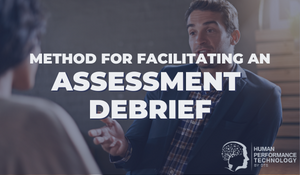In a Nutshell: SMART Goal-Setting Model
The exact origins of the SMART goal-setting model appear to be unknown and remain a subject of ongoing debate.Some of the earliest printed references appear in Leadership and the One Minute Manager, a bestselling book written in 1985 by Ken Blanchard, and the first known article on the subject is said to have been written by George T. Doran in 1981, and is called There’s a SMART way to write management’s goals and objectives. It appears that Paul J. Meyer was using the term informally with groups as early as the 1960s; however, there is no documented proof until 1986. In addition, many authors and educators used the terms “specific” and “measurable” to refer to work on goal setting, including Peter Drucker in his 1954 book The Practice of Management, but he did not attach it to the SMART formula.
Whatever the initial origins, SMART has become the most popular model for goal-setting in the world today, used across a wide variety of settings including sales, performance management, project management, as well as in secondary and tertiary education, life coaching, health and fitness, and personal development.
Overview:
The SMART acronym is used as a structured guideline for setting goals. Although it is represented in many different forms by different authors, it usually maintains a basic structure that looks something like this:
- S – Specific: A clearly articulated objective.
- M – Measurable: Use a quantifiable metric to track performance.
- A – Attainable: You have the resources to achieve the goal (skills, money, support, etc.)
- R – Relevant: The goal is worthwhile, meaningful, and should be attempted.
- T – Time-bound: Give the target a finish date.
(Note: the 5 steps do not necessarily have to be followed in any particular order.)
Example: Rather than starting with a vague goal like “get in shape”, using the SMART methodology we might write the goal down as follows:
Lose 20 kg by 1st September this year. (Specific and Time-bound.)
I will be able to track my progress by the use of electronic scales, aiming for an average of 2 kg loss each week. (Measurable.)
Based on what I have seen and read about weight loss, as well as a good understanding of my current level of fitness, I believe this goal is achievable. At a broad level, my strategy will involve using of combination of diet and exercise. In order to improve my chances of success, I plan to meet with a nutritionist to develop a dietary plan that best suits my needs, since I will need to make a significant change in my diet. I can comfortably afford 6-10 sessions with a personal trainer at my local gym to help me stay motivated and accountable in the first few weeks, which will most likely be the hardest. In addition, I will need to talk to my family, friends, and colleagues at work to manage their expectations when it comes to socialising, drinking, and excluding fast food. (Attainable.)
Achieving this goal is important to me because it will improve my confidence, health, and well-being. With summer approaching, I want to look good for the beach, so now is the best time to start. (Relevant.)
Over the years, many different authors have provided their own spin on each step and further investigation into these mixed approaches may be helpful in finding a version that works best for your particular situation. For example, instead of the word relevant, some people prefer realistic, results-oriented or risky. Variations of attainable also include achievable, agreed, and ambitious. Time-bound may sometimes by written as timely, trackable, or tangible, while specific tends not to change.
The exact letters that are used are perhaps less important than ensuring you have taken sufficient time to examine the goal in detail. On the whole, the SMART formula operates on the premise that "you can't hit a target you can't see clearly". The more thoroughly examined your goal is, the better equipped you will be to manage the steps along the way, and therefore the more likely you will be to hit the mark.
This article offers an expanded description of the summary listed in our post 40 Must-Know HR, OD, L&D Models.

Theo Winter
Client Services Manager, Writer & Researcher. Theo is one of the youngest professionals in the world to earn an accreditation in TTI Success Insight's suite of psychometric assessments. For more than a decade, he worked with hundreds of HR, L&D and OD professionals and consultants to improve engagement, performance and emotional intelligence of leaders and their teams. He authored the book "40 Must-Know Business Models for People Leaders."

/Model%20for%20mentoring.png?width=374&name=Model%20for%20mentoring.png)

We Would Like to Hear From You (0 Comments)